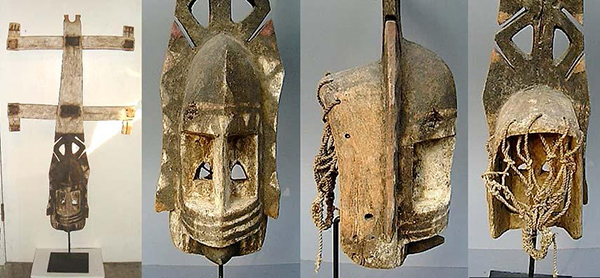Dogon Mask

This type of mask, known as kanaga, is created by the Dogon people of Mali in Western Africa. The masks are used in funerary rituals called dama, which allow the souls of the deceased to leave the village and enter the world of the dead, marking the end of the mourning period. The timing of dama rituals can vary from months to years after a death. Often villages hold a single dama ceremony for all of the deaths in the preceding year. Traditionally, the rituals enhance the prestige of the deceased and his descendants through the lavish performances. Today, dama rituals are also performed for tourists as a source of income.
Initiated members of the Awa society organize and perform the dama rituals, which take place over six days. Awa, also referred to as the Society of Masks, is made up of circumcised men. The society has ritual and political roles in Dogon culture, but presiding over the dama ceremony is among the most important. Dogon women and children are not permitted to attend the rituals.
The Dogon use many different types of masks in dama rituals, representing various characters, animals, objects, and abstract concepts, but kanaga is one of the most popular. At more than three feet tall, the wooden mask is topped with two crosses. The shape of the mask has several layers of meaning. To the observer, the masks represent a bird with white wings and a dark forehead. To the initiated, however, the crossbars represent both the arms and legs of God and the arrangement of the universe, with the lower crossbar representing earth and the upper one, the heavens. In their performance, Kanaga dancers jump up and then arc the mask downward to touch the ground, representing Amma, the creator god, giving life and fertility to the Earth.

